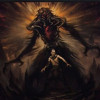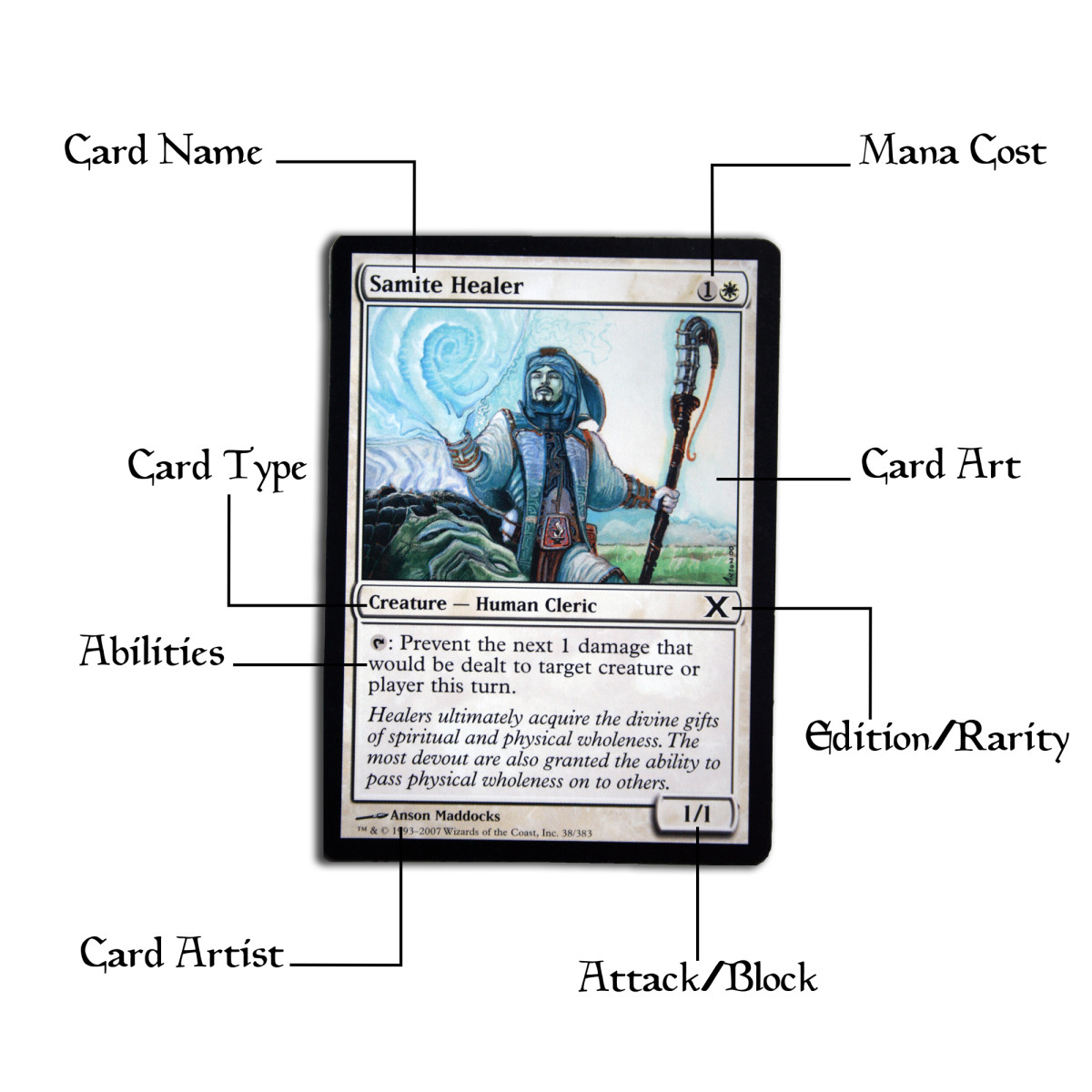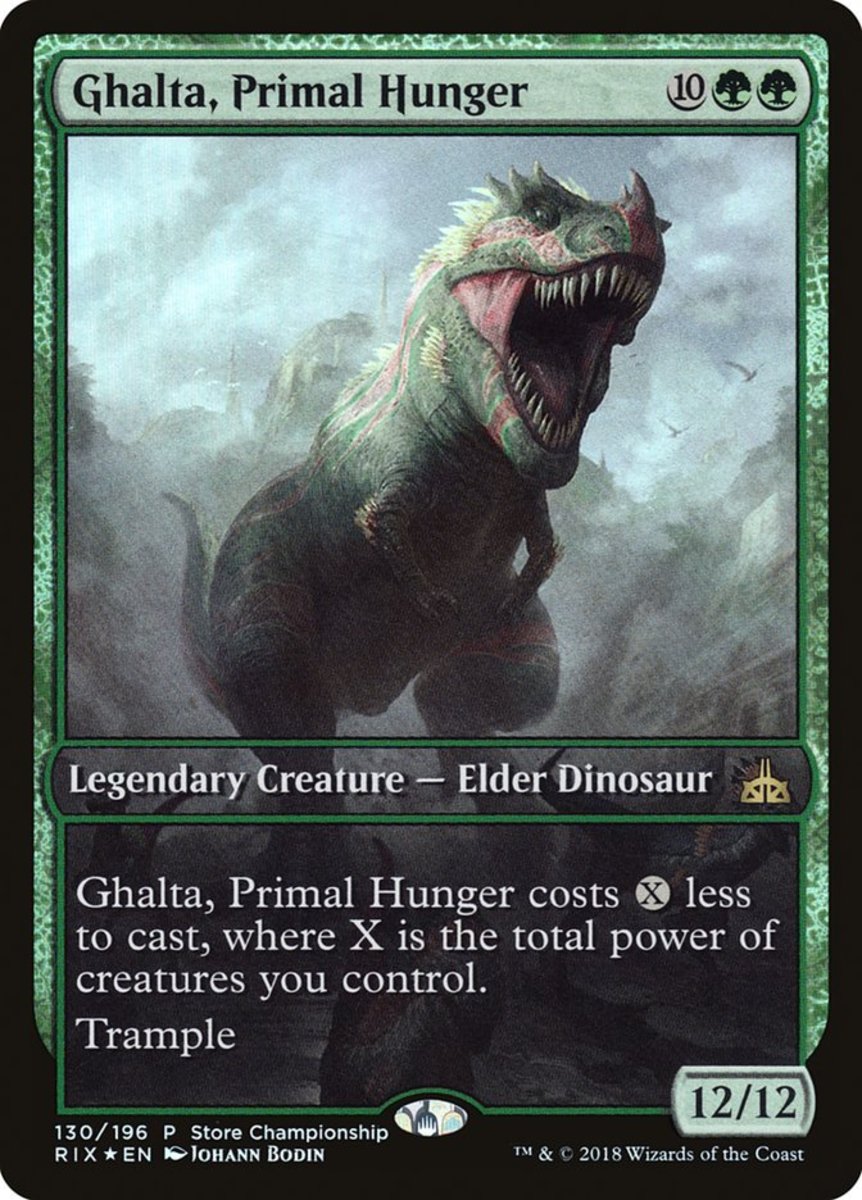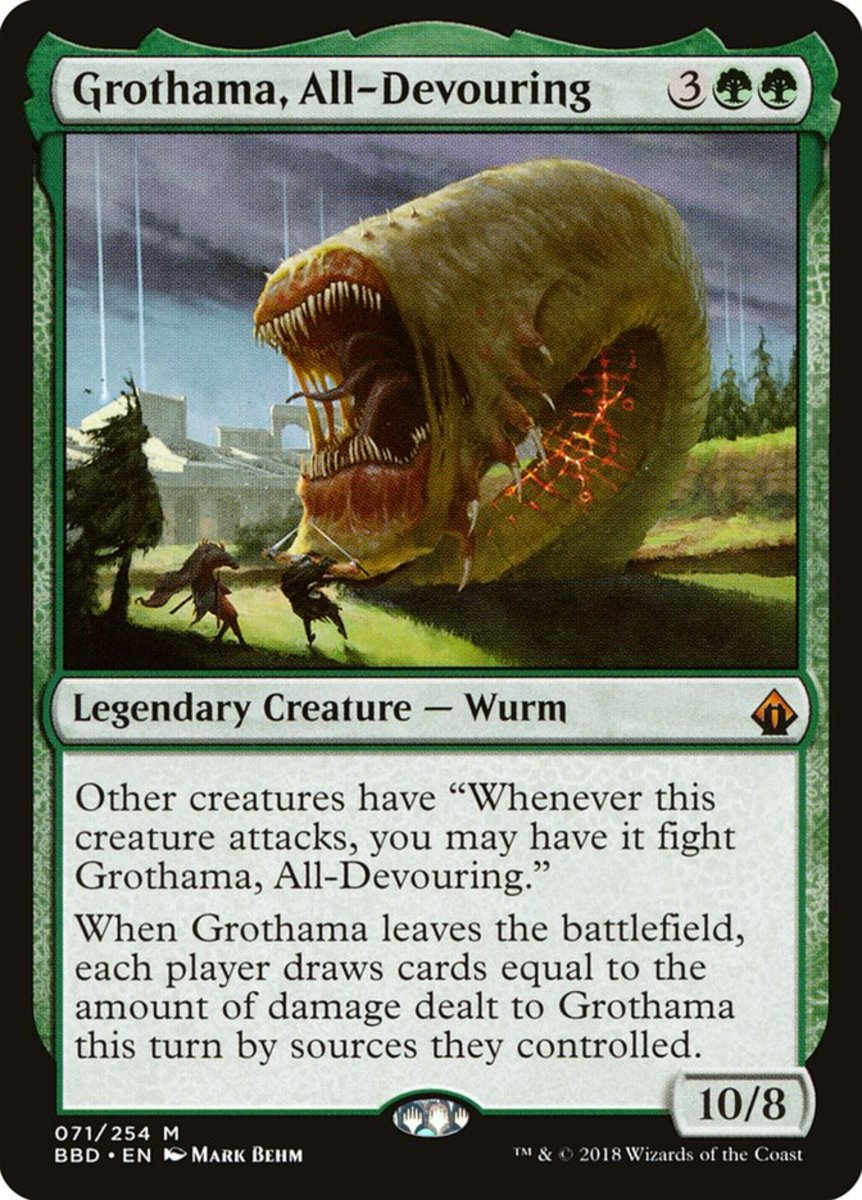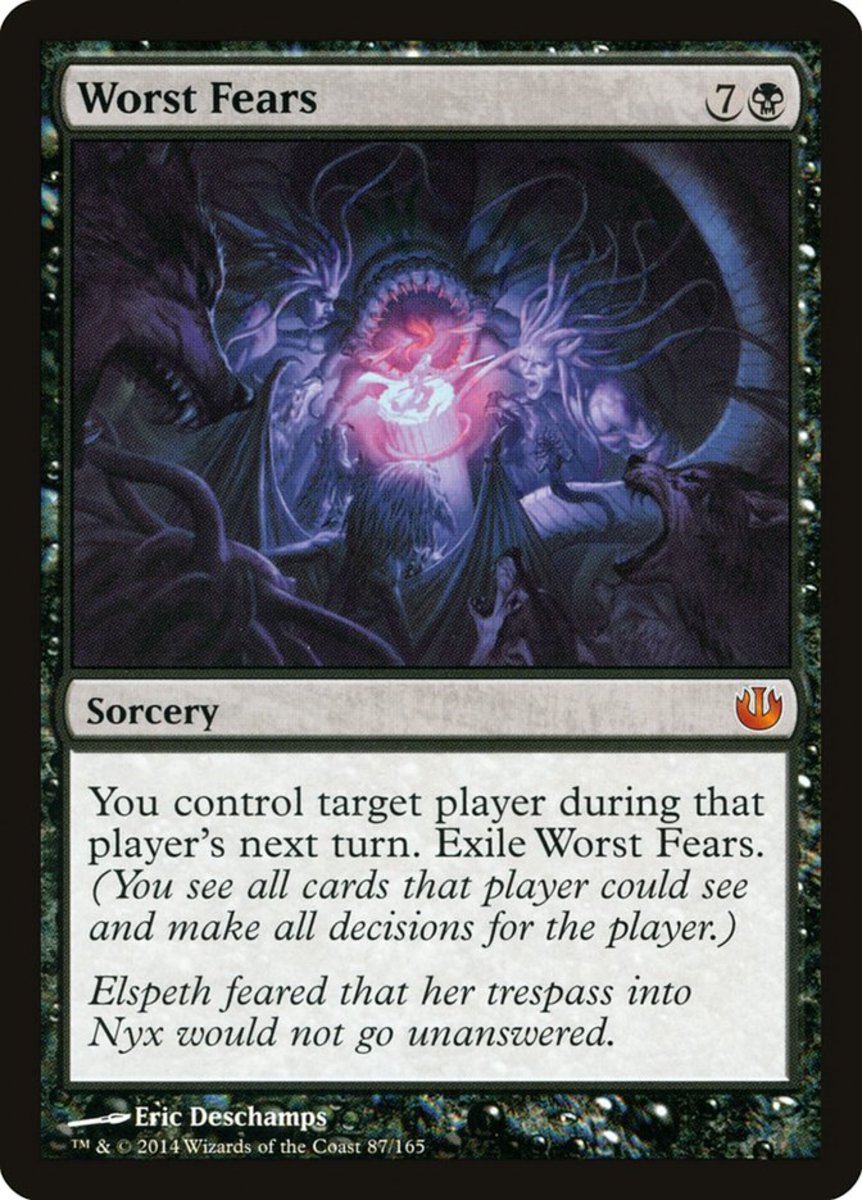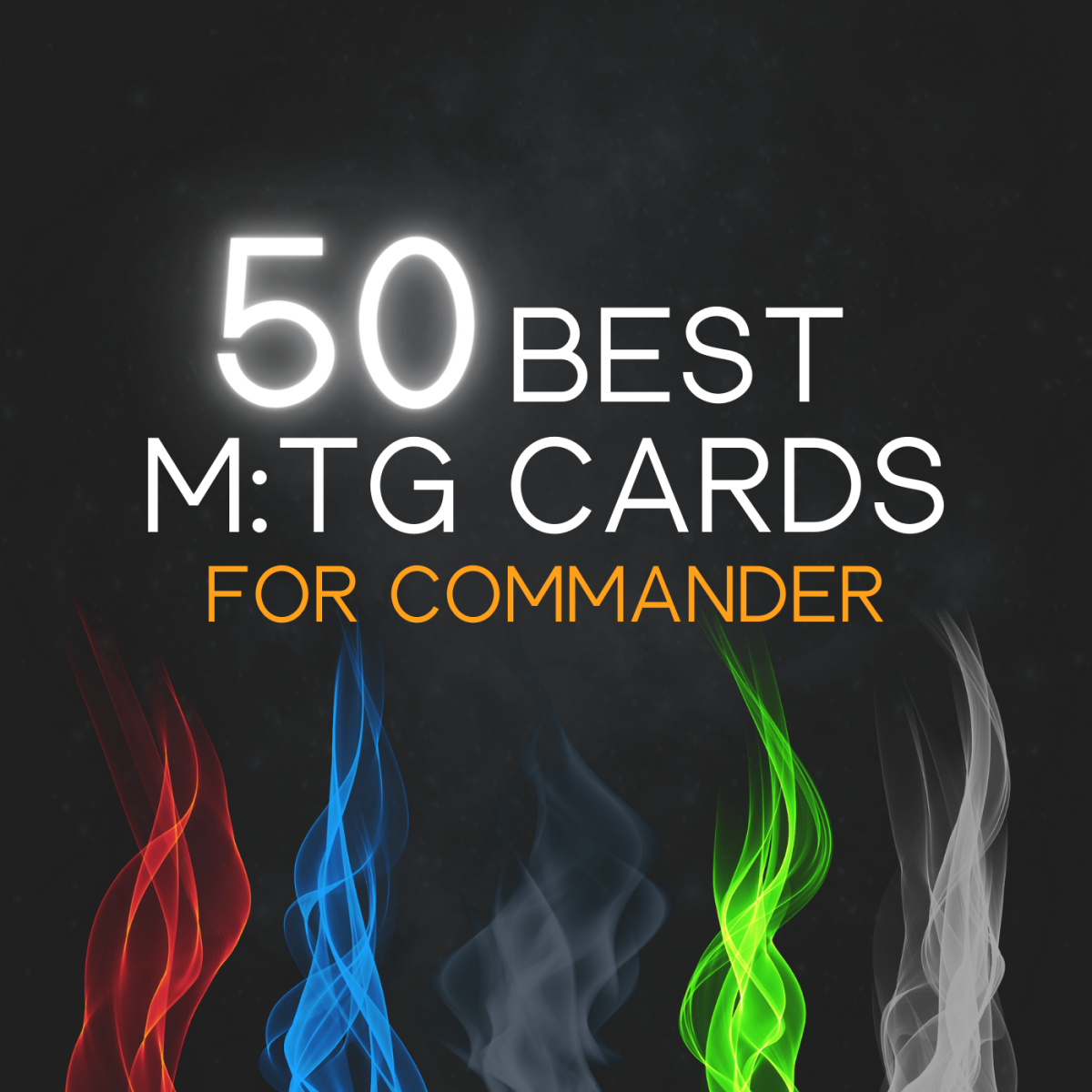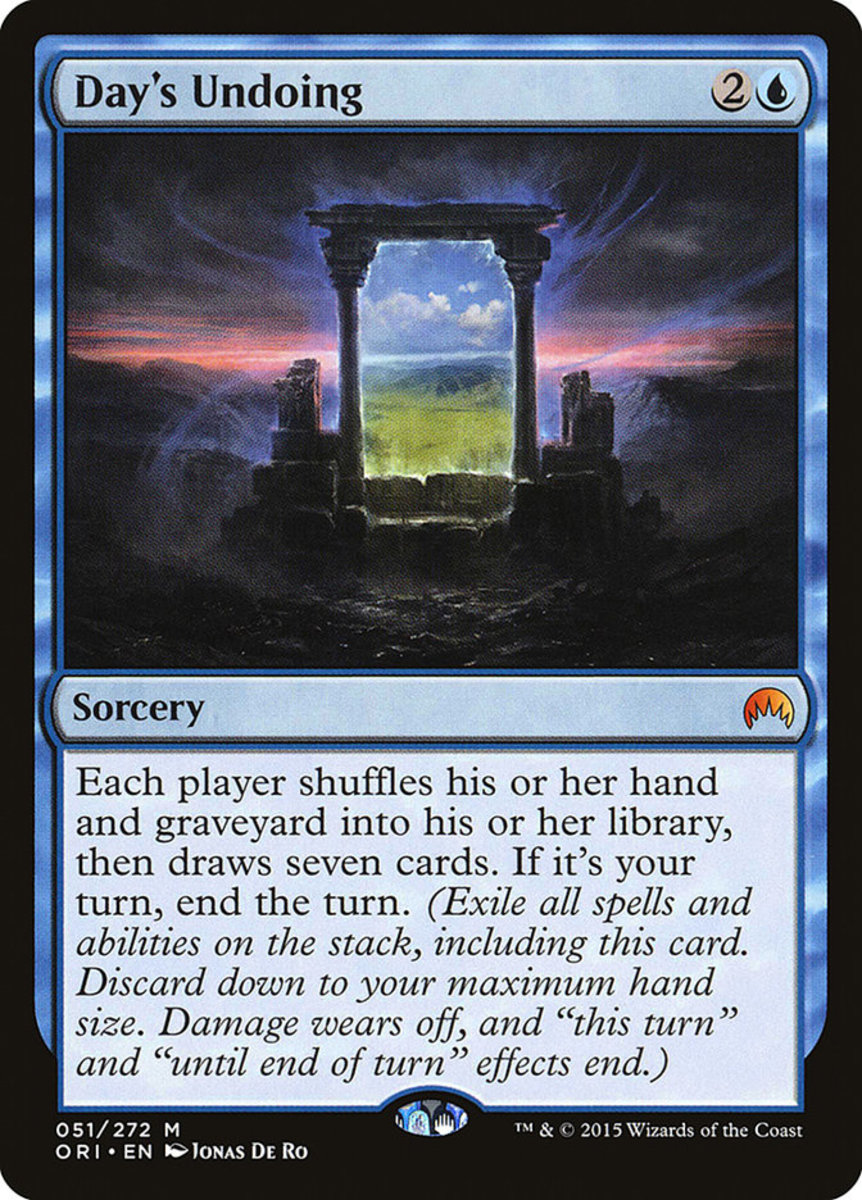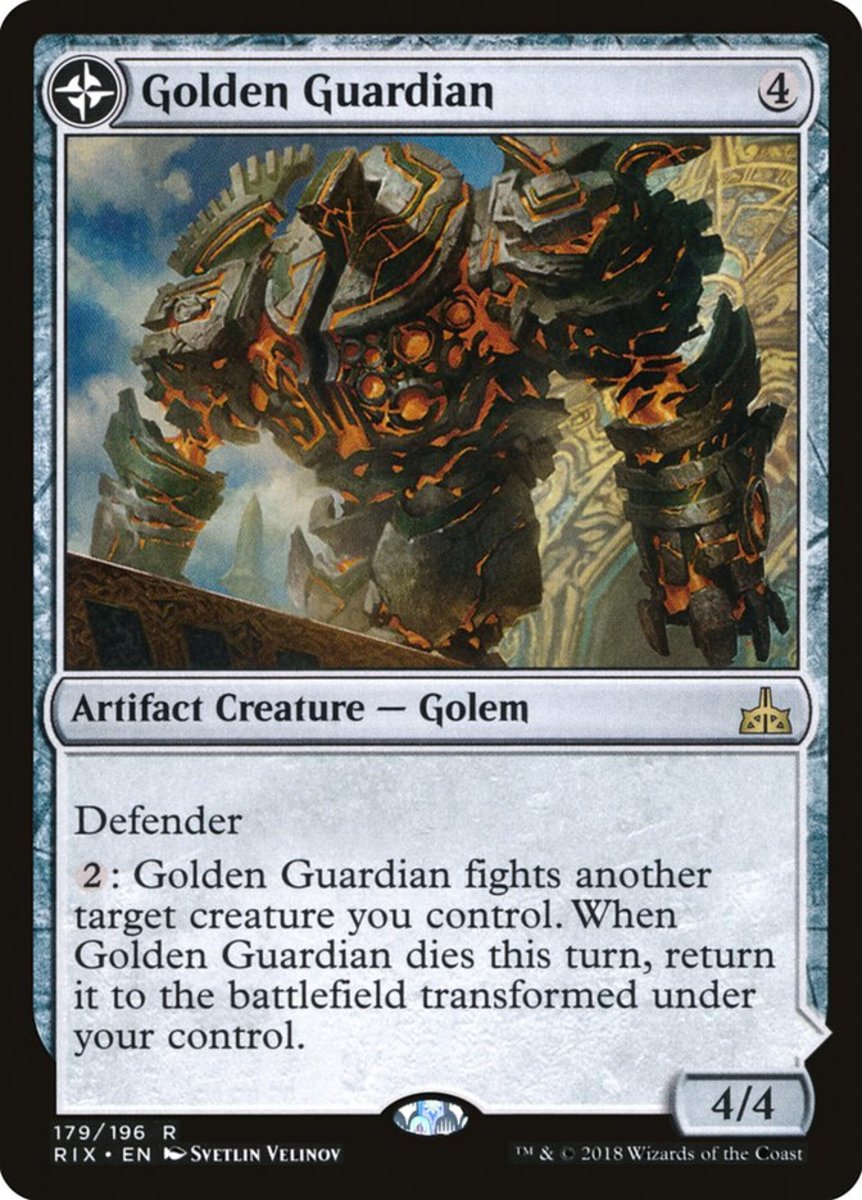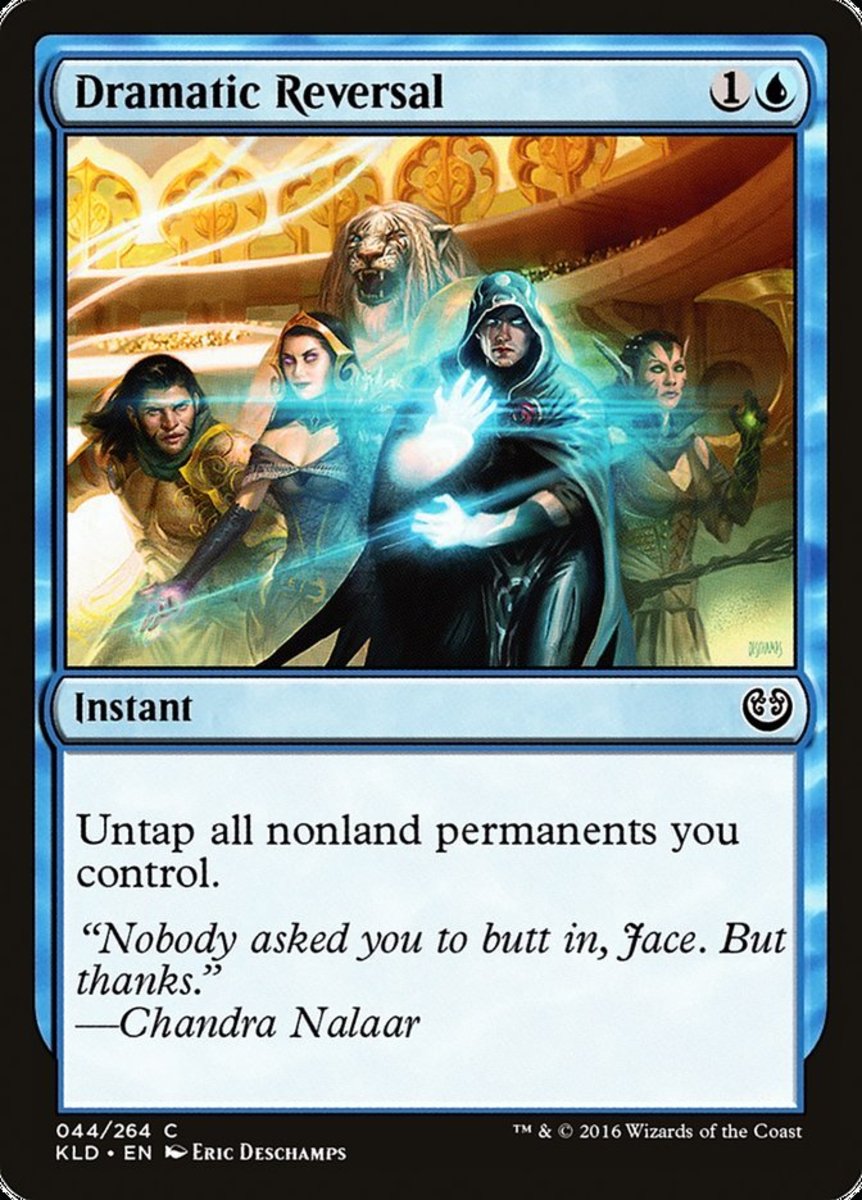- HubPages»
- Games, Toys, and Hobbies»
- Card Games»
- Collectible Card Games
Magic Weekly - G/W Hexproof or Bogles
The Basics
The Hexproof deck is very simply constructed and the game plan is just as easy.
Turn 1 - Play a hexproof creature.
Turn 2 - Attach auras to it and swing.
Turn 3 - Attach Daybreak Coronet and swing for a lot.
Turn 4 - Win.
Theoretically. The deck thrives because it's creatures are both a) unable to be targeted by their removal and b) too large to be destroyed in combat. The deck's strength lies in it's all-in strategy, and it can also easily be it's downfall. If your opponent can answer your singular threat, it is often difficult for you to recover from it.
The Modern Deck and It's place in the Meta
Bogles is an aggressive, non-interactive combo deck that fares best in metas that cannot deal with hexproof or lifelink. The deck's largest weakness is that although it can consistently deal upwards of 7 or 8 damage a turn by turn 3, if you are playing around another combo deck like Amulet of Vigor combo or even Splinter Twin, the difference between turn 4 and 5 can be immense. There are also decks like Jund and Tron which have ways to deal with a hexproof creature, by making you sacrifice it or simply destroying all permanents on the board. The biggest headache you'll have to watch out for are cards like Thoughtseize and Liliana of the Veil, because without cards in hand, your hexproof creature becomes very weak.
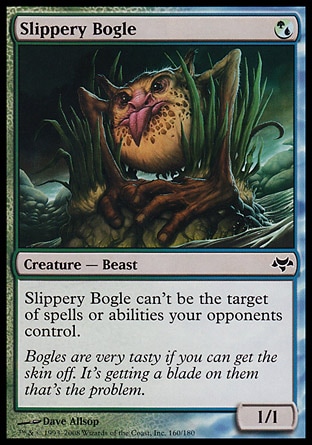
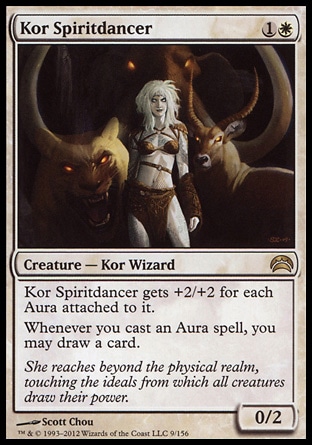
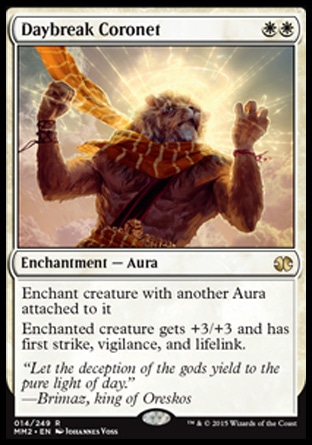
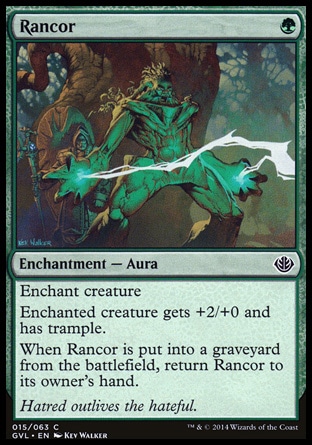
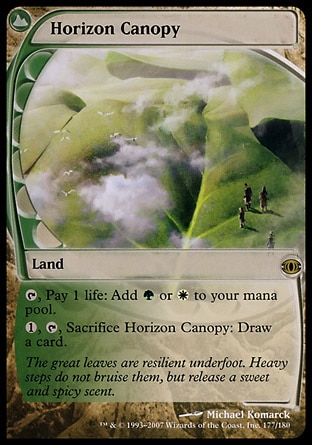
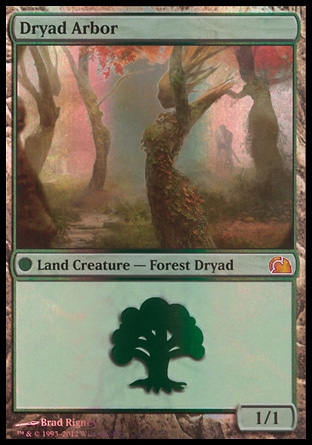
The Main Deck
Creatures:
4 Slippery Bogle - The core of the deck. Your 1/1 Hexproof for 1. He and Gladecover will be the two cards you should mulligan down to, to make sure you have your plays on-curve.
4 Gladecover Scout - Same as boggle but mono-green instead of hybrid green/blue.
4 Kor Spiritdancer - The main draw engine. Spiritdancer is a 0/2 for 1W and allows you to draw a card everytime you cast an aura. Now there are two ways you can play her, she can either be your voltron tank and be the target of all your auras, allowing you to have an enormous creature even when enchanted with your weaker auras or she can simply be another creature on the field, acting as an pseudo-enchantment herself (doing nothing but adding value to enchanting your other creatures).
Non-Creatures:
4 Daybreak Coronet - This card singlehandedly gives you the most value out of all the enchantments run in this deck. For the low cost of WW, the enchanted creature gains +3/+3, vigilance, first strike and lifelink, making your creature many times stronger than anything else on the board. The only drawback of this card is that it must be enchanted to a creature that is already enchanted.
4 Ethereal Armor - The second strongest enchantment in the deck. For W, the enchanted creature gains +1/+1 for each enchantment, including itself, under your control. In addition it gives your creature first strike, and will usually power your creature to victory.
4 Rancor - Giving your creature trample is the main reason this card is included. It gives the enchanted creature +2/+0 and trample for G and when the enchanted creature dies, you get to return Rancor to your hand. This card takes all of the downsides typically associated with enchantments, and flips it on it's head, instead of losing cards when your creature dies, you get Rancor back and can potentially make better trades.
3-4 Hyena Umbra and 3-4 Spider Umbra - Both of these cards give your creature +1/+1 and totem armor, which means if it was destroyed, but not sacrificed, you can instead destroy this enchantment. Further layers of protection for your creature are often enough to keep it alive from combat and the occasional board wipe.
2-3 Spirit Mantle - This card can often be the deciding factor in the mirror. Spirit Mantle gives your creature protection from creatures, which means that it cannot be targeted, blocked, or damaged by other creatures. This often serves the same purpose as Rancor, but allows you to bypass creatures all together and makes your blocks even better.
2-4 Keen Sense - Our second draw engine. When the enchanted creature deals damage to another player, you draw a card. This card can be tricky to play because unless you know your creature cannot be chump blocked, it does little more than counting towards your Coronet and Ethereal Armor.
1-2 Unflinching Courage - This card is in effect, the worse version of a few cards in the deck. It gives your creature +2/+2, trample and lifelink, which at first glance seems amazing. But unfortunately due to it's (relatively) high mana cost at 1GW, it is easily the most difficult card to cast in the deck. But it does everything we want out of an aura, trample to get damage in, lifelink to stay alive and +2/+2 is alway good.
Lands
1-2 Dryad Arbor - Easily the strangest land in all of magic, the dryad arbor is a 1/1 creature that is also a forest. It's greatest strength in the deck is that it can be fetched with any land that can search for forests, meaning you can search for this in response to a spell forcing you to sacrifice a creature.
4 Windswept Heath - The fetch land that does everything we want, searches for forests and plains.
2 Any fetch land that searches for forests - to get those Dryad Arbors, temple gardens and forests.
4 Horizon Canopy - Normally I wouldn't recommend a pain land in a deck like this, but because of our low mana curve and the necessity of card draw in this deck, Horizon Canopy can often determine the difference between a win and a loss.
4 Temple Garden - Can be fetched, and taps for Green and White. What's not to love?
4 Razorverge Thicket - The best fast land for our deck, because we will only ever need 3 mana.
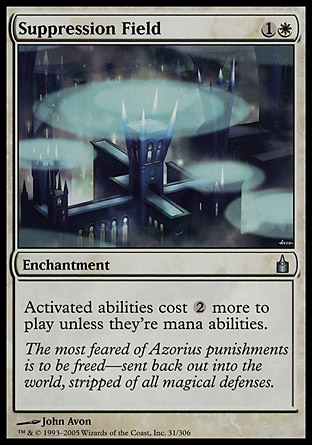
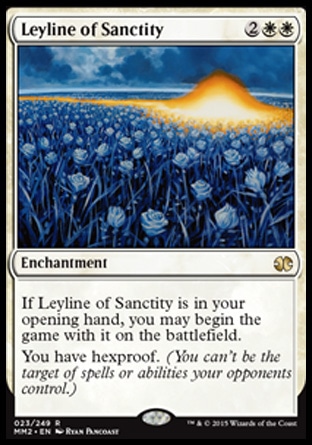
Side Board
Must-Haves
2-3 Stony Silence - Stops Affinity's main cards from working and slows the deck to a halt. Also hurts Tron.
2-3 Suppression Field - Can shut down faster combos like Collected Company, Affinity and Splinter Twin.
2-3 Nature's Claim - Removing pesky artifacts and enchantments like blood moon and ensnaring bridge. The life they gain is negligible.
Maybes:
2 Seal of Primordium - Same thing as nature's claim, but you are able to play it proactively, and it boosts your count towards Ethereal Armor.
2-3 Path to Exile - Answer creatures vital to combos and/or clear the way for lethal damage.
2 Relic of Progentitus - Remove the threat of graveyards and draw a card.
4 Leyline of Sanctity - Astounding against Jund, as they have few answers to it and it stops them from targeting you with Liliana's sacrifice ability and Thoughtseize.
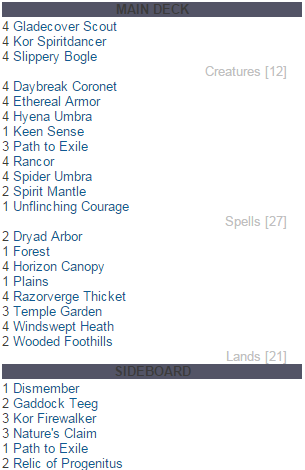
Sample Deck and Playing Tips
Here is an example of a Bogles deck that won a state championship tournament. Unlike my example, he ran main deck path to exile, probably to combat Splinter Twin.
Tips:
- Always try to start with a 1-drop creature in hand. Otherwise it is too easy to lose because you simply didn't have the tempo. Also try to have at least 2 lands in hand, so you can play the creature and eventually play the Coronet.
- Often people think the best sideboard card against bogles is Spellskite, when in fact Spellskite has a few glaring weaknesses against this build in particular. Since you will very rarely see a Spellskite in the main board, you can often preemptively side in your artifact hate if you know they are likely to play him. The best thing you can play against it is your Daybreak Coronet, because unless the Spellskite is already enchanted, it cannot redirect the Coronet to itself. It is also more difficult for them to redirect it when you have a Suppression Field on board, and impossible when you have Stony Silence.
- The most important thing you can do with this deck is maintain your tempo. If you cannot attack for a turn because your creature will trade with another, you will most likely lose. But because this deck runs so many cards that make combat favorable for you, this is often not the case.
- Enchanting your creature after combat may sometimes need to be your play because it may sometimes be necessary to draw out their counterspells or hate before you know which creature it is right to enchant.
- Like with so many other decks, your life is a resource. The only time you need to block is when you know you can favorably trade, and not get blown out by their expected hate. This is especially important because of all of the sources of life gain played in the deck. ie) if you know they play pyroclasm, don't block their 2/2 with your 3 or 4 toughness creature unless you have first strike.
